The inaugural edition of Nedbank Gravel Burn attracted a strong international field. South Africa’s biggest gravel-racing star, Matt Beers, contested it like an absolute warrior to lead from start to finish. But it wasn’t easy. In this in-depth interview, Beers tells us about the pressure of leading, bike choice, gear preservation, a knee injury that had to be re-stitched and more.
By Sean Badenhorst
First-time events seldom get a lot of media attention. TREAD Media was the only media brand in the world that carried the daily stage reports from the first edition of Nedbank Gravel Burn. Besides that, we followed the live timing updates each morning to see how each stage played out and watched the daily video highlights on YouTube.
In case you missed it, Matt Beers won the opening stage and then held that lead until the final stage to become the first winner of the Pro Men’s title at Gravel Burn. Although there was a seasoned international men’s field, Beers was the most experienced stage racer (winning three Cape Epics in past five years) and it showed.
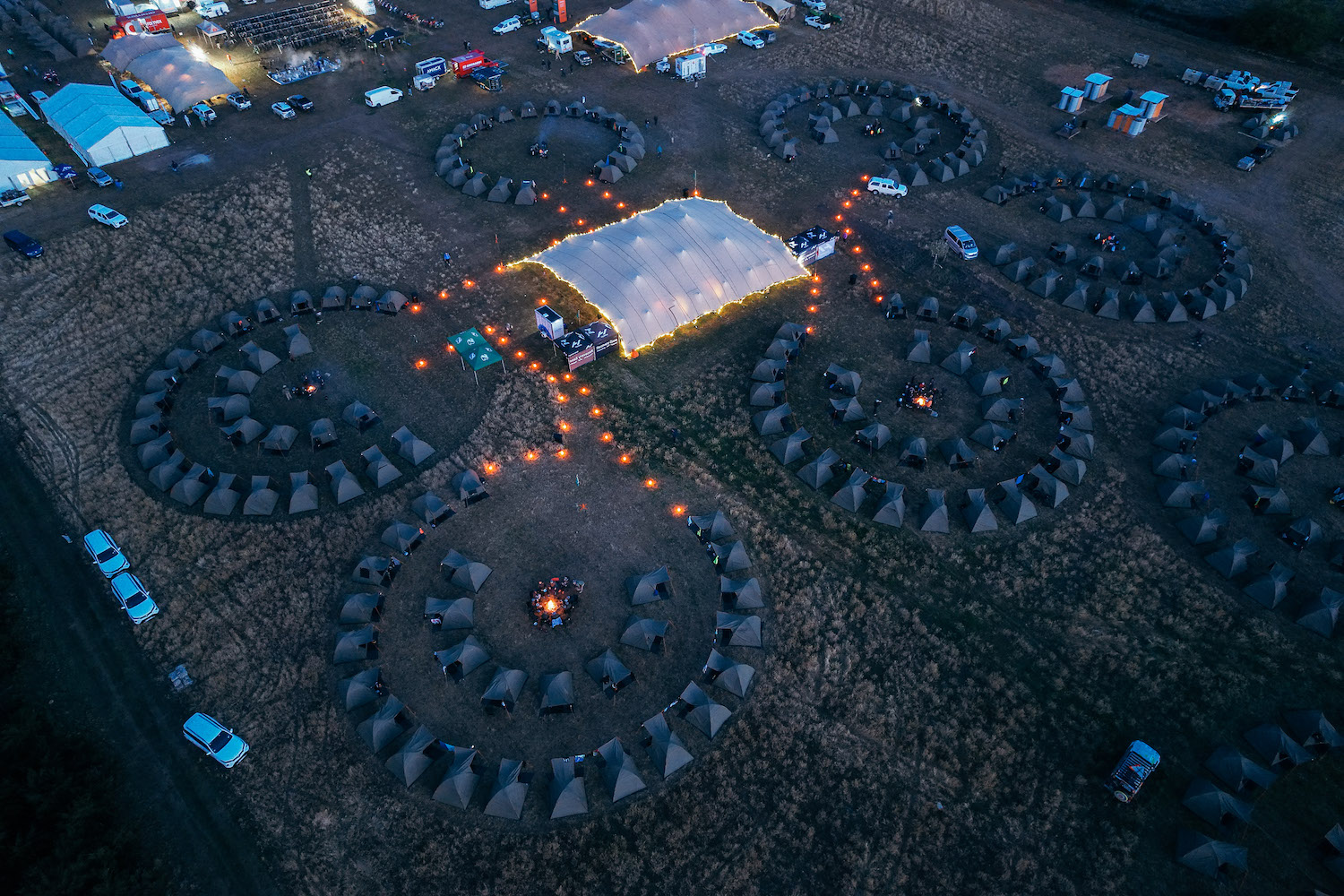
He was seldom far from the front and, when it mattered, he was powering off the front to put his rivals under pressure. Mechanicals (mostly punctures) set some of his early rivals back, but his one nemesis throughout the race was Simon Pellaud, of the Tudor Pro Cycling Team.
The Swiss ace went into the final stage just 33 seconds behind the South African. But it proved one day too long for Pellaud, who admitted he had felt flat on the last leg, losing almost five minutes to a hard-charging Beers and a shot at the coveted title.
We asked Beers some detailed questions about his Gravel Burn experience and he responded with thorough, thoughtful replies.
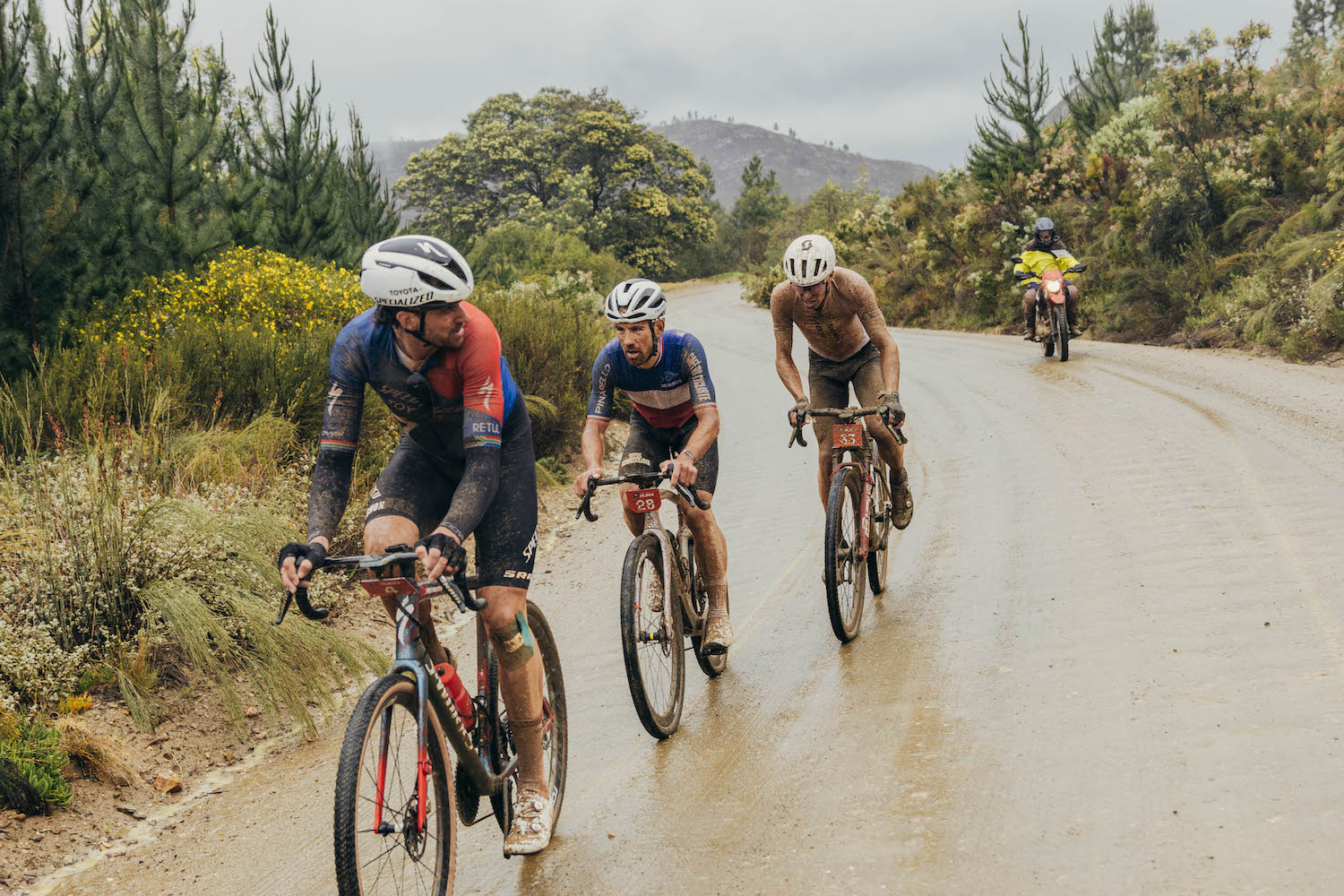
You came into Gravel Burn with good form from the Life Time Series races. But you also arrived with a knee wound that seemed to trouble you. How did you sustain the knee injury and did it affect your ability to pedal properly at Gravel Burn?
Yeah, I came into Gravel Burn knowing that the form was good. I put in some good yards at the end of the year and I normally do race quite well in October for some reason. I’ve always had pretty good form at the end of the year; I normally go through a slump kind of in the middle and then at the end I can press on quite well.
I sustained a knee wound at Little Sugar (a 100km mountain bike race). I was leading the race and got a puncture. That was the second last Life Time Series race. I was chasing back and just went off this little drop and the front end washed out. I just put a good old hole in my knee and had to have stitches in the US. When I came back here, I was just nursing and trying to not get it infected and then the second stage of Gravel Burn when I sprinted against Lucas Baum into Willowmore, I hit my knee on the handlebar drop. Just split it open again had to re-stitch it but yeah luckily the MediClinic team was amazing at the event and they stitched it up really good. So, I just had to deal with that. It didn’t really affect pedalling at all but it’s always something your body is having to heal, so it’s not ideal. If there’s like a wound that your body is having to fight it takes energy, so that was my main concern but clearly it was okay.
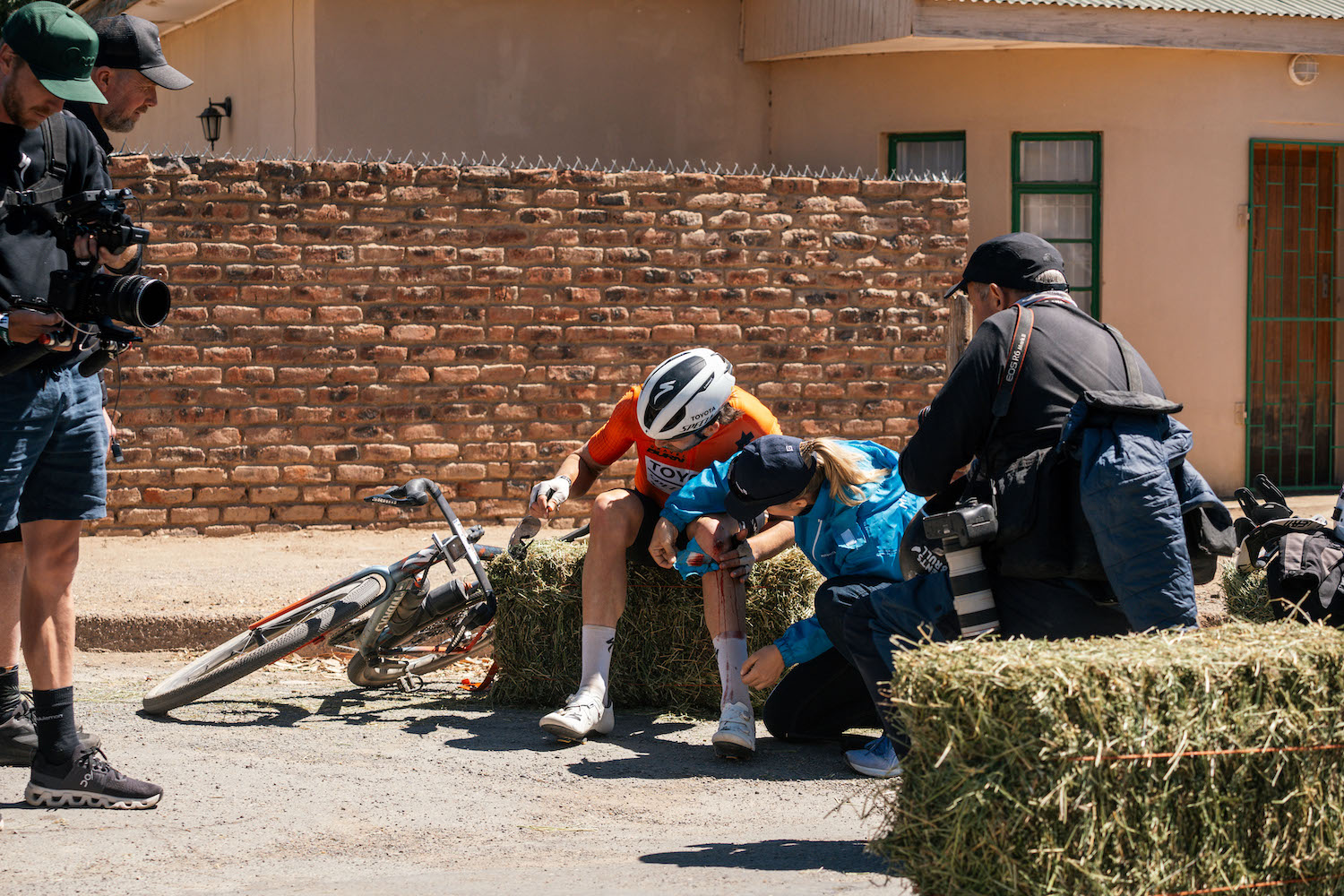
Which model bike did you choose for Gravel Burn and why?
I rode the Specialized Crux at Gravel Burn. It’s the bike I know the best. The Diverge is a lot more forgiving bike – it was released this year – it has a Future Shock and can fit 2.0 mountain bike tyres, but it is quite a bit heavier than the Crux. I’ve ridden the Crux in very harsh conditions and it works well and is good enough for me. I saw the stages weren’t going to be that long. Obviously there was that one hilltop finish and a few pieces in the whole race that I wanted a bike that accelerates really fast and is just light and nimble. Over seven days, yeah, I think it was the right choice. Both bikes can work, I was just more comfortable on the Crux and preferred that as my race bike.

What gearing did you run on it?
My gearing changed throughout the race, but I kept the mountain bike XX UDH (SRAM XX Universal Derailleur Hanger), so I had the 10×52 with the mountain bike derailleur. I changed the front ring between 48 and 50. Yeah, I think that maybe now that I know the course – I don’t know if we’re doing the same course again – but for an unknown race you don’t know how steep the climbs are, how loose they are… With all these factors it’s a lot safer bet to run a wide-range cassette with a big chainring so if they are really fast downhills you can, you know, cook that 50×10 or 48×10 and then if there’s something really steep you still have more than a 1:1 ratio. It’s just the safest bet for me. And yeah, now that SRAM has updated the shifting a bit on that mountain bike derailleur, it’s quite fast. It’s the best gearing to run I think if you don’t know what the terrain is like.
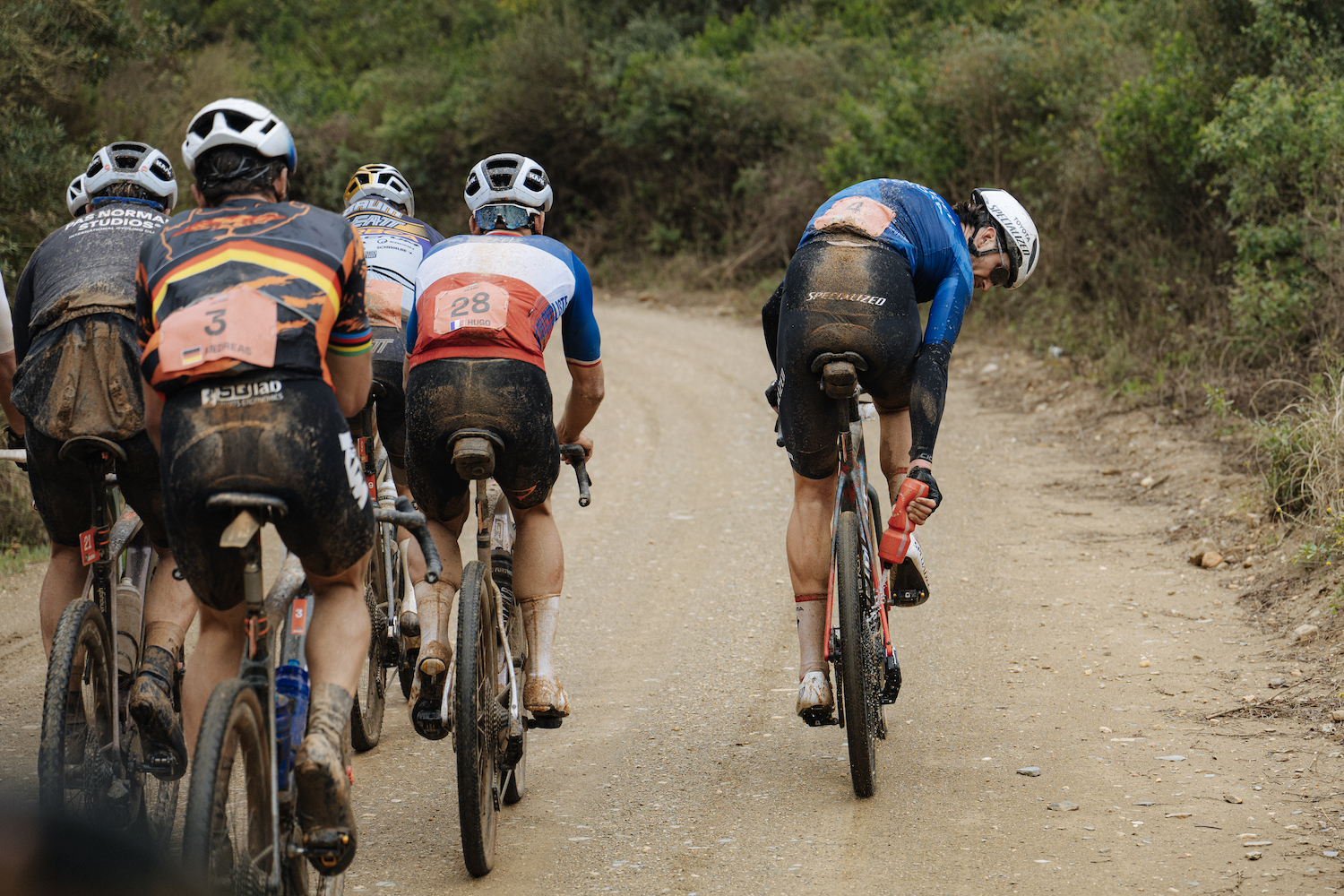
What tyres did you run?
I ran the Specialized Pathfinder 50s. It’s quite a new tyre and a Pathfinder 45 for one stage. The hilltop-finish stage I ran the 45s just to optimise on the tarmac and the hilltop finish. But I ran Pathfinder 50s 90% of the time and then on the first mud stage I ran a Specialized Tracer 50 on the front just because I thought I would need that little bit of extra confidence on the front end.
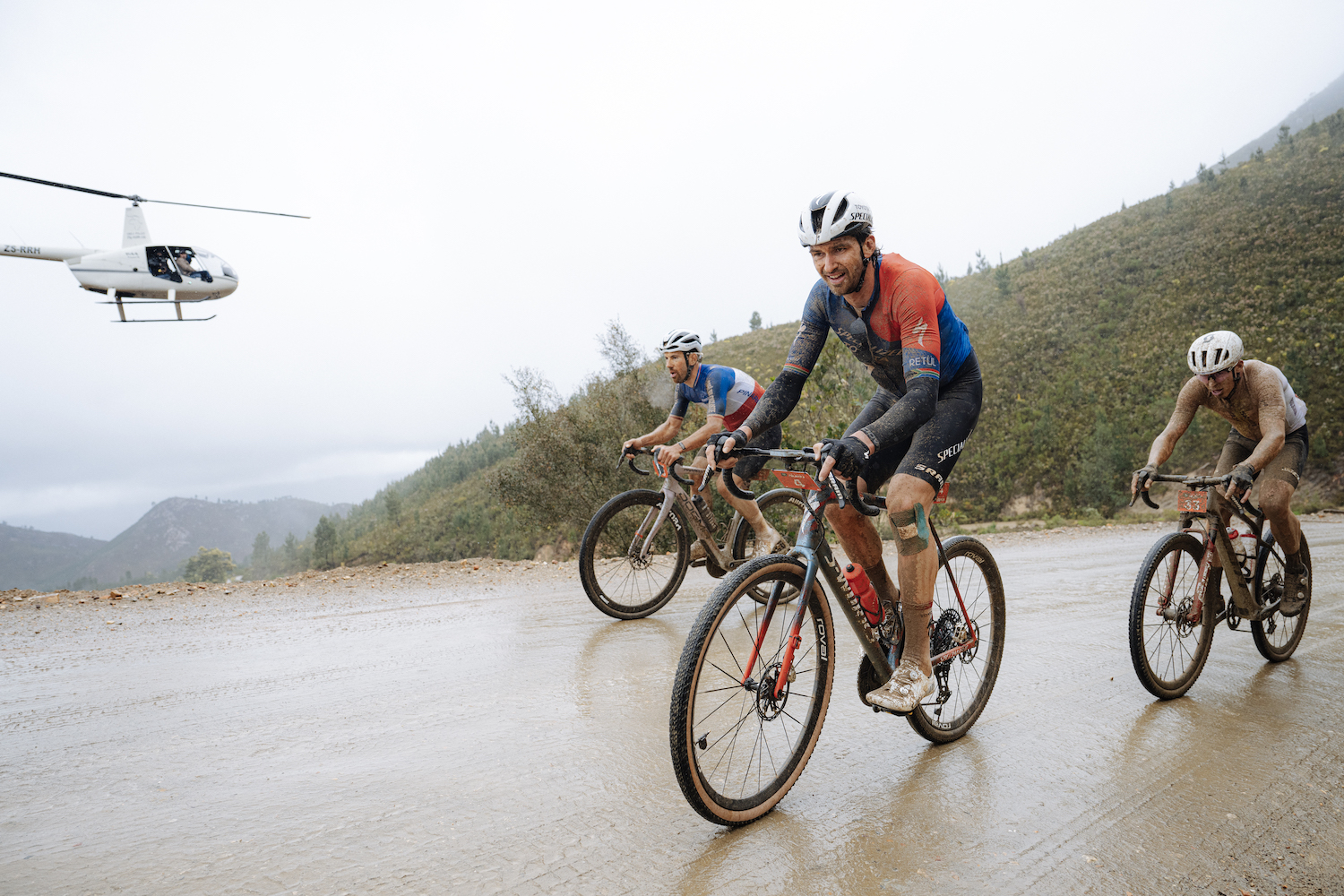
Was tyre pressure a challenge to choose before the start of some stages?
I was running around 28 to 29 PSI on the front and then like 30 to 32 PSI on the rear. No inserts – I just don’t really like how they feel. I haven’t found one that I particularly enjoy. I was running TyreWiz on the rims just so I could look on my Hammerhead the whole time to see if I had a puncture or not. It was quite useful and something I’m testing for future races. Just to know and deal with a puncture and know whether if you plug it if the air is holding or not. I think it’s quite useful, especially for this race where we had no tech support. So, I really wanted to know if I plug the tyre it was gonna hold or, if I had a puncture I could fix it as quick as possible. I think this race could’ve come down a mechanical. It was pretty tight and Simon and I were separated by less than a minute. I think we were among the only two guys who didn’t have a bad puncture. I had one in a neutral zone, but I was lucky enough to have Johan (van Zyl) there to change the wheel. But yeah, I think we were the only two guys to not have like a bad mechanical, so I think that’s what the race will come down to in the future, pretty much who can preserve their bikes the best.

Having raced and won several Cape Epics and now Gravel Burn, which would you say is harder physically?
The Cape Epic is definitely harder physically. The racing is more full gas, the competition is deeper, the route is harder. Gravel is quite different – it’s more of like almost road tactics in a sense, whereas mountain bike you can kind of just ride full-gas because of singletrack. The racing plays out quite differently, but yeah, Cape Epic is a lot harder on the body, but in a different way. I think Gravel Burn, certainly for the front end, is more neuromuscular and obviously having no suspension, it’s a different harshness on the body, but overall, it’s physically a lot less demanding than Cape Epic.
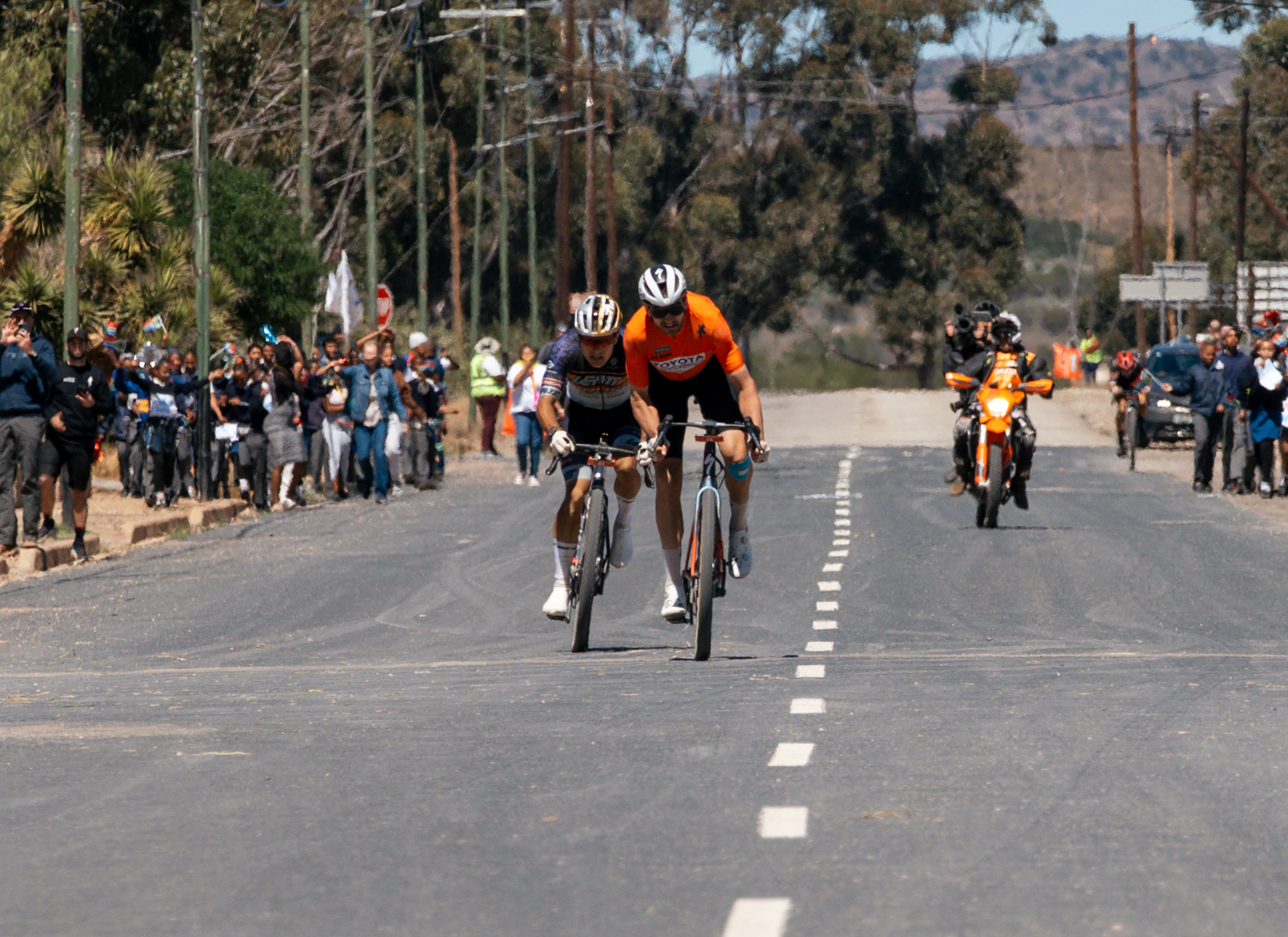
Gravel Burn is a Solo entry race, but I assume you are permitted to get mechanical assistance from fellow riders. Having your Toyota Specialized teammates must have been a help for you in the case of mechanicals?
Yeah, it’s a Solo race, but I had Johan (van Zyl) and Travis (Stedman) to help me if anything were to happen. Depending on how the race played out obviously, like if I was out in the first few days then there was no need, but obviously I was in the leader’s jersey and then opened up quite a good gap by the second stage already. That became priority. It definitely helps a ton; I mean those guys were amazing all week. We didn’t really need to play too much team stuff until the final day when they really needed to rally. And obviously Johan gave me his wheel on Stage 5. But it definitely helps and I feel it’s going to be crucial in the years to come just with the whole mechanical side of it. That’s probably going to be the main thing of the race. But yeah, even if there aren’t teammates, riders have allies, like Simon had Mattia De Marchi. The guys all gather around each other and help when push comes to shove, so there’s no real way to monitor like teammates as a sense because you could have a friend on a different brand or a different whole set-up and they can still help you win if they want to.
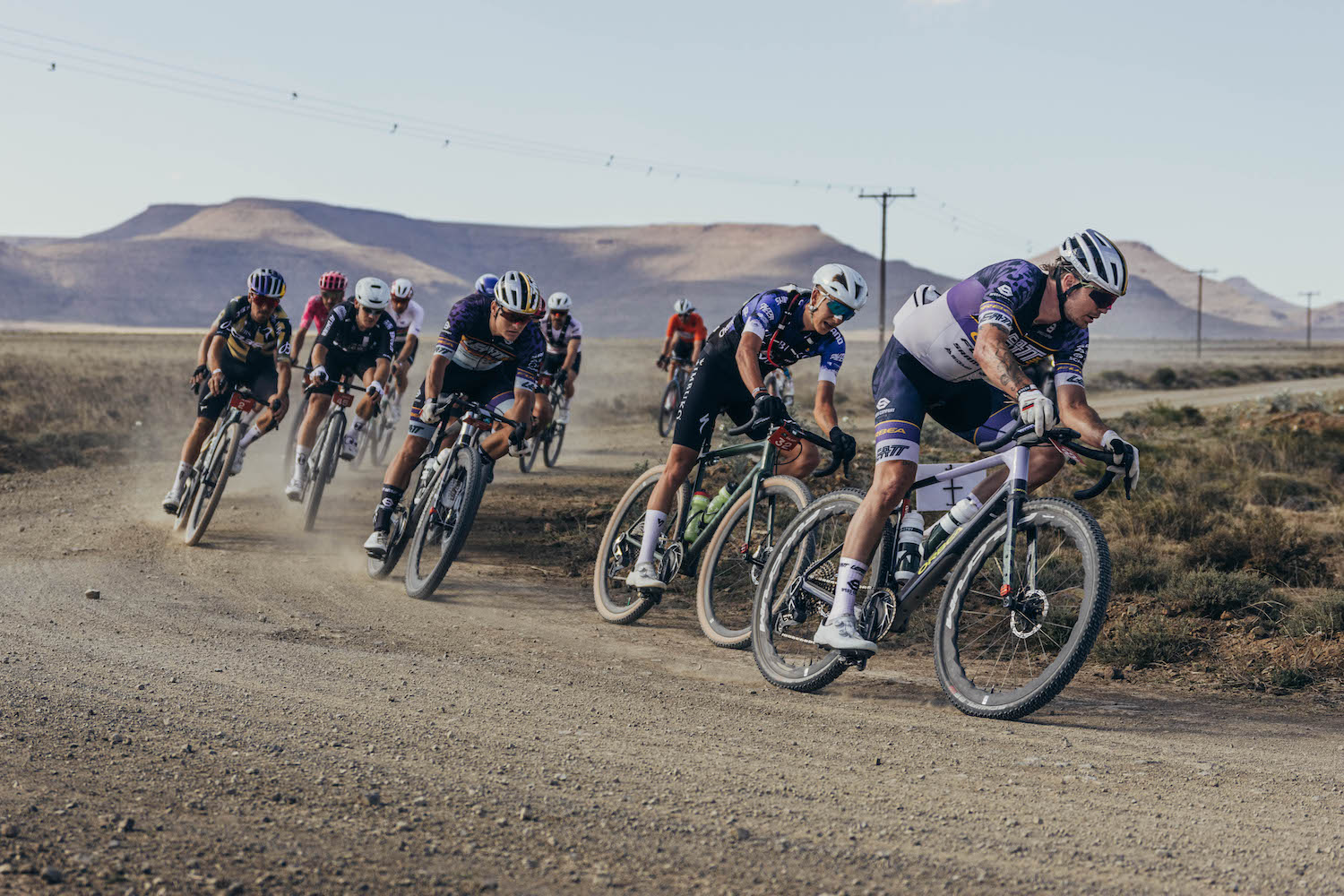
As we saw, large chunks of time can be lost in Gravel Burn with a fall or mechanical. Were you mindful of riding up front a lot to reduce the risk of these issues occurring (able to choose the better lines etc)?
Yeah, I think I knew the mechanical aspect would be a major factor in what would make the race. I’ve raced enough gravel to know that there’s not a lot of room for error. You know, one wrong line and you can smash a wheel or get a pretty bad puncture. So, to me, it was always about just being at the front bubble, making sure I could kind of see or ride off the back a bit to see the lines. Obviously, the bunches were a lot smaller this year, being the first year so it was quite nice. I’m sure it’ll just grow and become even more sketchy. But yeah, that’s a huge one – you must preserve the equipment. At the end of the day on gravel bikes we are under biking – they’re really just glorified road bikes, so if you hit something it’s more than likely a wheel or tyre is gonna be gone and crashing is a lot easier just because there’s no room for error.

You led the GC from start to finish. Was this your plan going into the race?
Yeah, I didn’t actually think of that but yeah, I did lead from start to finish. I’m sure the organisers didn’t like the jersey staying on one set of shoulders, but yeah, I know how to race stage races. It definitely wasn’t the plan but that first day in the rain and cold I know I do really well; and I felt really good that day at the end and just decided to give it a push on that last big climb… I had the legs and regretted actually not pushing a little harder just to stay away solo, but in the end didn’t matter too much. It’s easier to have time in the beginning on everyone and then you can kind of race your own race and let everyone try and get time back on you. It’s a lot easier to defend time than to try and take time away.
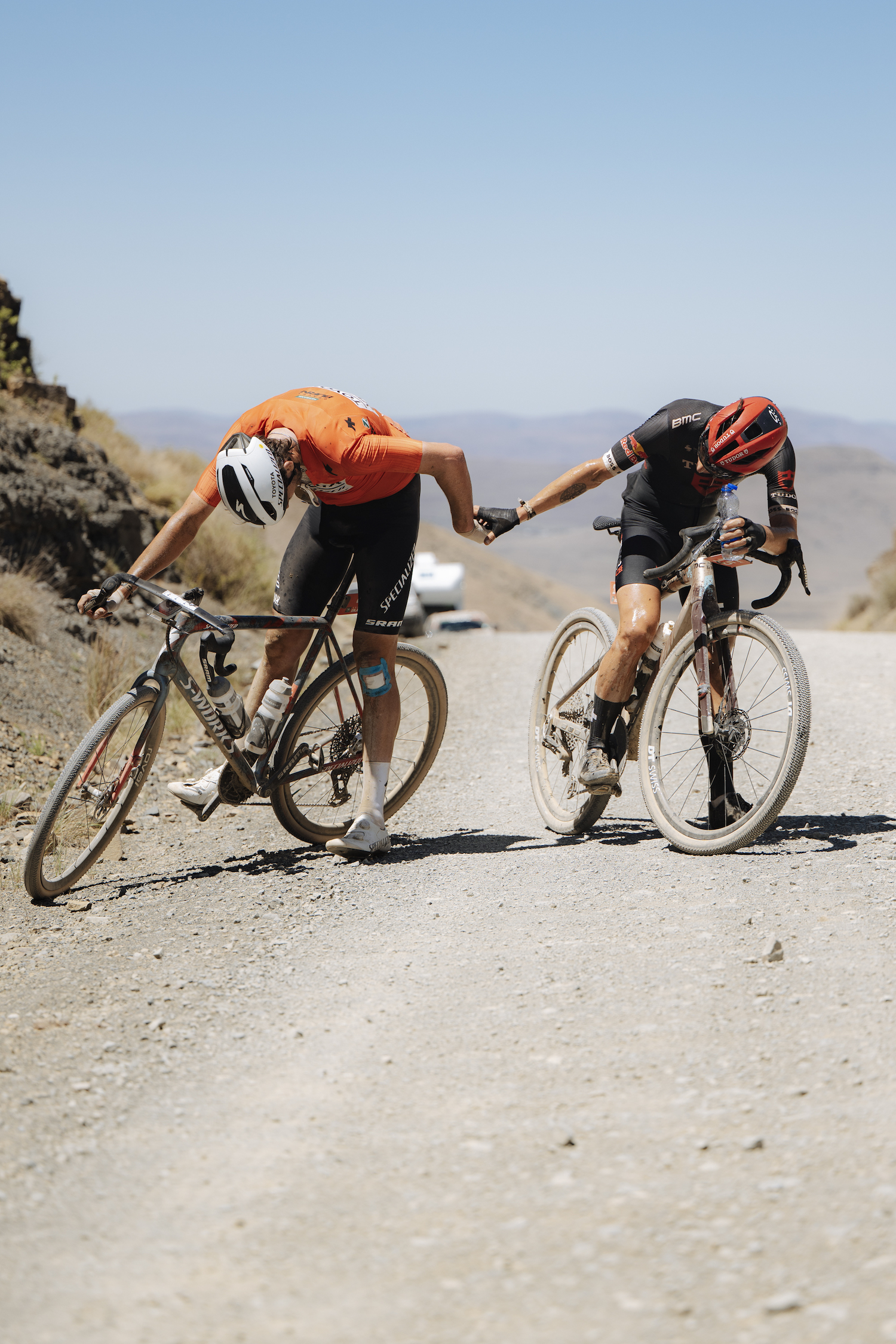
Being the race leader comes with pressure. Which day did you feel most under threat of possibly losing the lead?
Every day was pretty stressful just because the terrain was unknown. I only knew the first day and like a little bit of the second day. Everything else was just completely unknown. I knew that hilltop day would be tricky. Simon is a good climber; I’m also good but yeah, I knew it was gonna be really hot that day and I do struggle a bit in the heat, especially because I hadn’t been able to do heat training just because of how my schedule was. It was very hard. I was sub-par that day – I’m surprised I didn’t lose more. But yeah, that stage whatever it was Stage 5. The hilltop finish I knew was going to be a tough fight, but I knew I could minimise my time loss as best I could. And then obviously Stage 6 that was neutralised was gonna be a proper battle. Those two days were the two days I had to watch for sure.

Many of the world’s top Gravel racers were present, but their performances seemed inconsistent. Do you think that your week-long stage-racing experience gave you an advantage in this regard?
Yeah, I think the harshness of our terrain in South Africa is quite different. It’s very different to the rest of the world – to Europe, to America. And then the day in and day out was very hard especially on the gravel bike. Not a lot of us have done stage races on the gravel bike but obviously I have the kind of know-how from mountain biking and how to race these types of races. I think that definitely played in my favour. Just knowing that you need to think of the long game, preserve equipment, be really focused on like weird little things like hygiene. You know just looking at all times for rocks and not using too much energy – so yeah, I think all those add up.
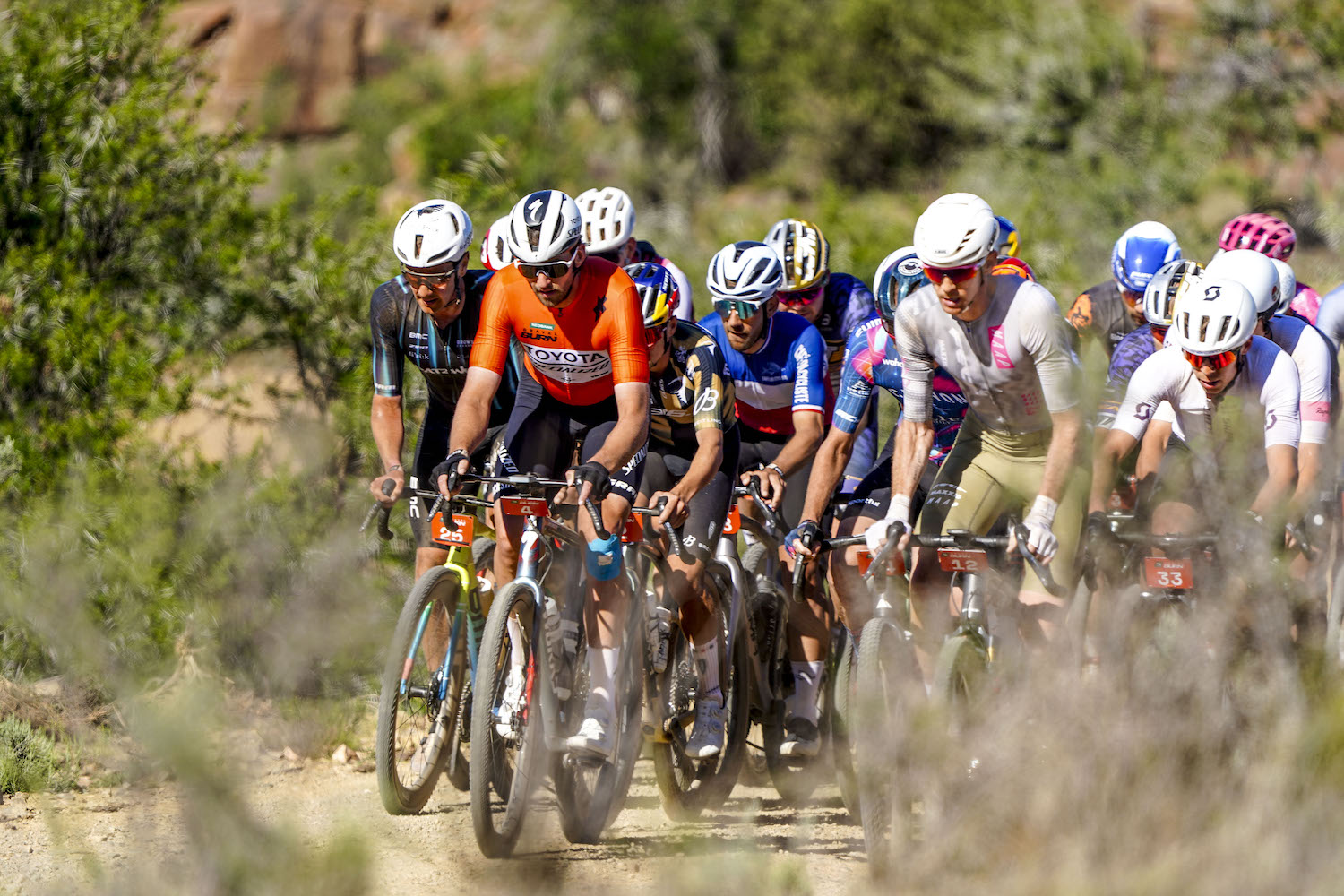
Being one of the favourites, you were under pressure to perform well at – and ultimately win – Gravel Burn. Did you feel that pressure each day? If so, did it motivate you?
Yeah, it’s always hard when you are one of the favourites going in, but I do kind of feed off that energy as well. So yeah, it’s a bit of both. There is definitely pressure when you’re wearing the jersey, you really must be on your toes and make sure you’re feeling you can’t let your guard down at all. But it is kind of nice as well because it really makes you focus. I think when you don’t have the jersey you almost lose focus, maybe chat with friends I don’t know and that’s when things can happen – you miss moves, hit a rock… So being in the jersey hyper-focuses you and, under pressure makes you do your job even better. I have been in this situation before with Cape Epic and other races, so I do know how to manage it pretty well.
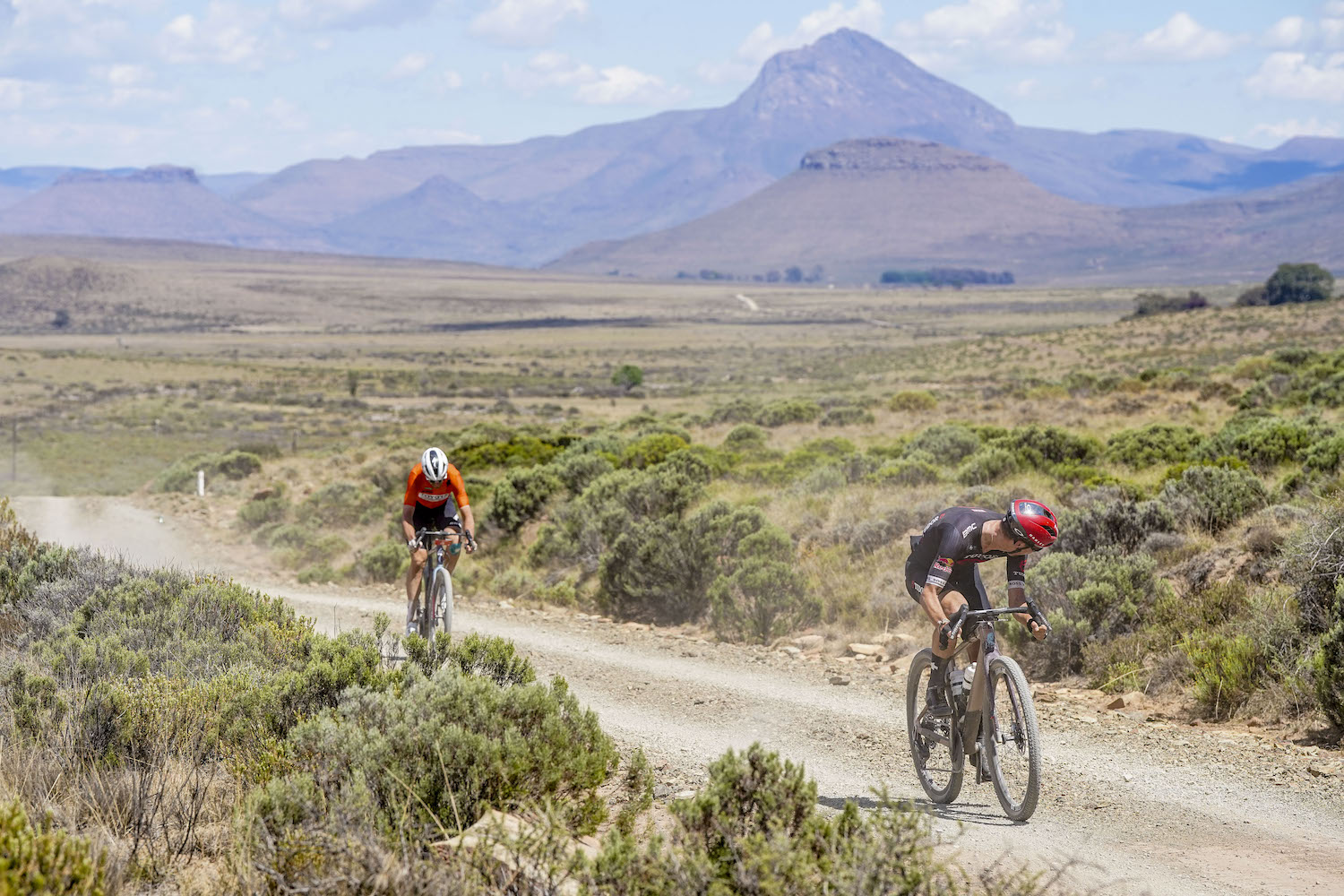
From an outsider’s perspective it seemed like the stages got progressively harder. Did you find that?
I think they did get harder. There were lulls I guess, like the first day was very hard, like on paper one of the hardest just because of the climbing-to-kilometre ratio. But then I think the sheer roughness of the terrain on the other stages that didn’t look bad on paper, but the terrain was very rough and the wind… They were harder, progressively, but also like, in weird ways they weren’t. Like we had that long tarmac day which, on paper, was one of the easiest days but then the tiny bit that was on gravel was really corrugated and really rough. And then some of the other days were quite smooth and nice, so it’s kind of strange. But definitely a backloaded race with two pretty big days back-to-back, which I think is good – makes the racing interesting.
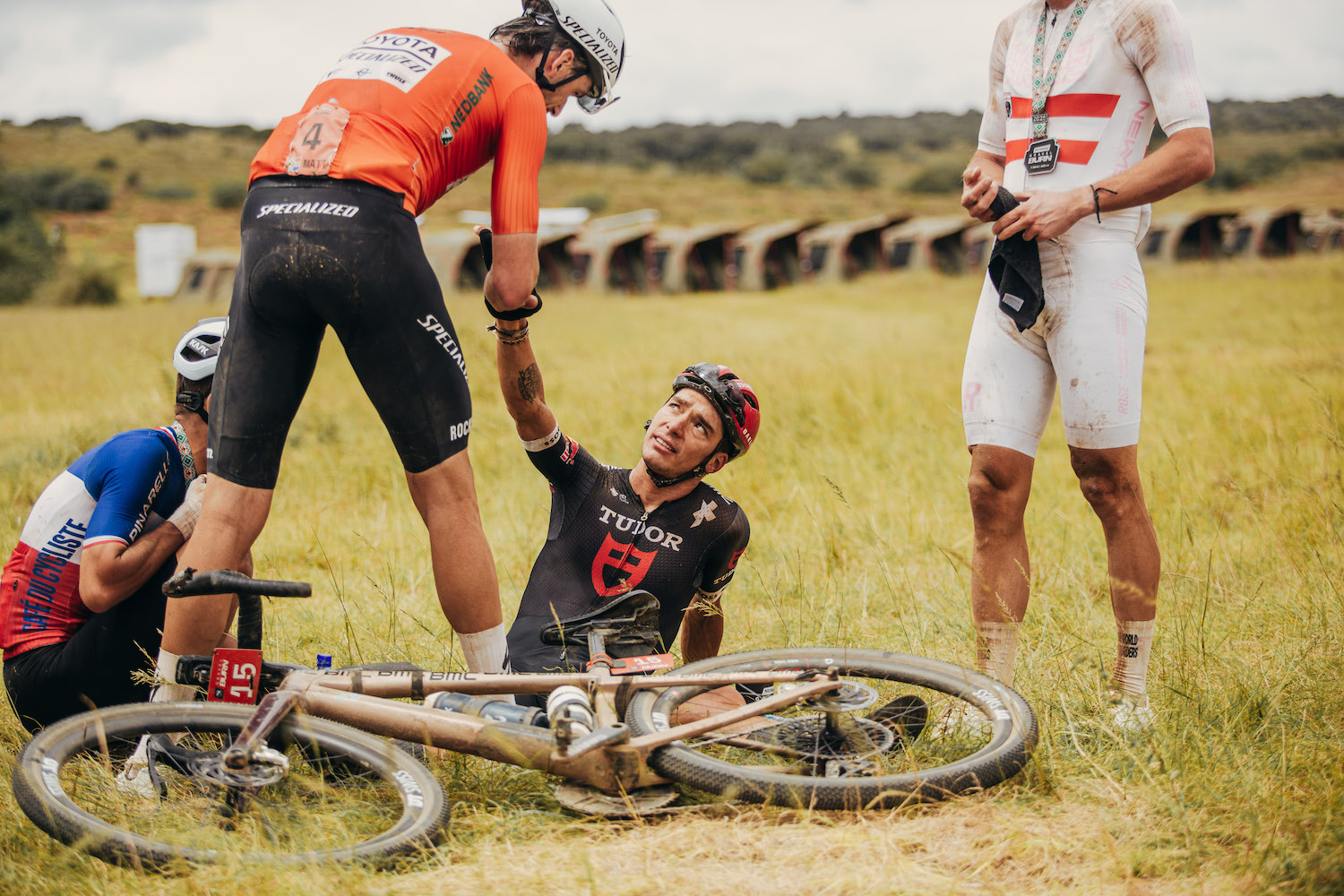
Do you feel the organisers got the formula right in terms of the route?
I think for the most part it was okay. The route was good, the stages are quite short actually. Each being like three hours to three-and-a-half and then there would’ve been two four-hour-plus days. But yeah, maybe just the Queen Stage was a little bit too much roughness. It was mountain biking-esque. Not the whole stage, just a stretch of about 20km. I think the course had eroded quite a lot from when they pre-rode it. It’s hard to say. That part of South Africa the Great Karoo is very unforgiving and harsh and you don’t really know what it’s gonna be like this time of year. But for the most part, I think it was a decent balance.

With the experience of one Gravel Burn under your belt, is there anything you would have done differently? If so, what?
I’m not too sure what I would change. There are always little things little things that you can improve on, but for the most part as there’s not much more I could’ve done. Maybe more route recon is probably the only thing that would’ve benefited me. But that’s very hard to do with my schedule. But a route recon would have helped to make maybe small little changes. It’s always nice not guessing where you are going.
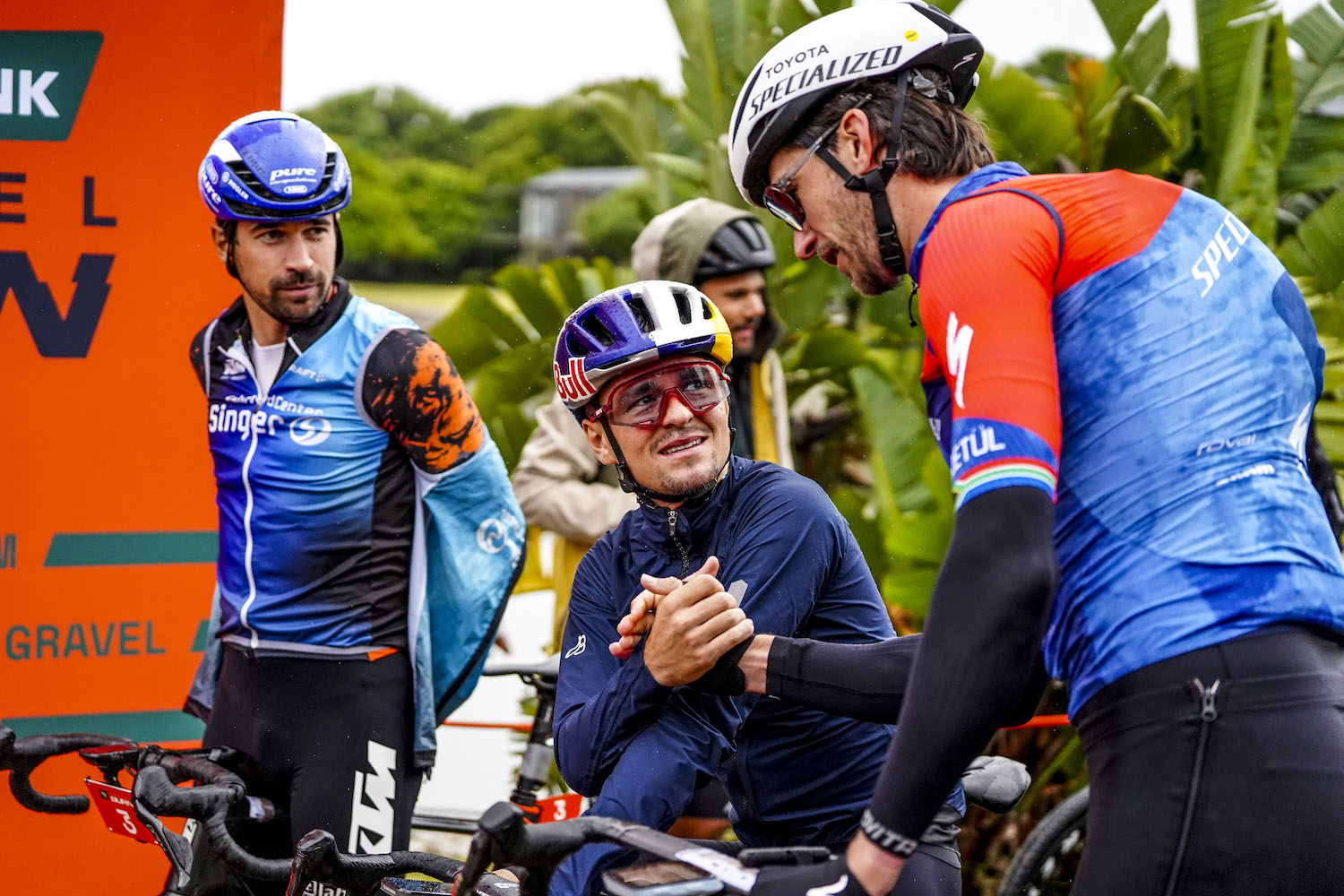
Do you feel that Gravel Burn has a big future and will continue to attract the world’s best gravel racers?
Yeah, I think it does have a big future. I think the media around it and the social media growth of the event was quite substantial during the event. Obviously, a lot of people wanted to know what is happening in the race and all that stuff so that’s always positive. I think a lot of people are interested in experiencing it and seeing what it’s all about. Yeah, it will definitely grow. There’s not a lot of big gravel stage races and Gravel Burn I think has become quickly one of the biggest. It will be cool. Hopefully it just grows from strength to strength. It’s always nice have a big race like this at home in South Africa. Will it attract the world’s best gravel racers? I think it will slowly trickle in bigger names. The only problem is it is very late in the year. A lot of the guys are very done with their season in October so to push it out another month is a stretch. It will just depend on the riders and what they wanna do really. But yeah, I’m sure we’ll see many top guys coming through.
Want a detailed recap of the action? Below are links to the Pro Men’s stage reports from each day.
NEDBANK GRAVEL BURN: BEERS DELIVERS HOMETOWN HERO PERFORMANCE
BEERS CONTINUES GRAVEL BURN DOMINATION WITH ANOTHER STAGE WIN
NEDBANK GRAVEL BURN: QUEEN STAGE NEUTRALISED DUE TO DANGEROUS WEATHER
POWERFUL & PRECISE – BEERS WINS INAUGURAL NEDBANK GRAVEL BURN


